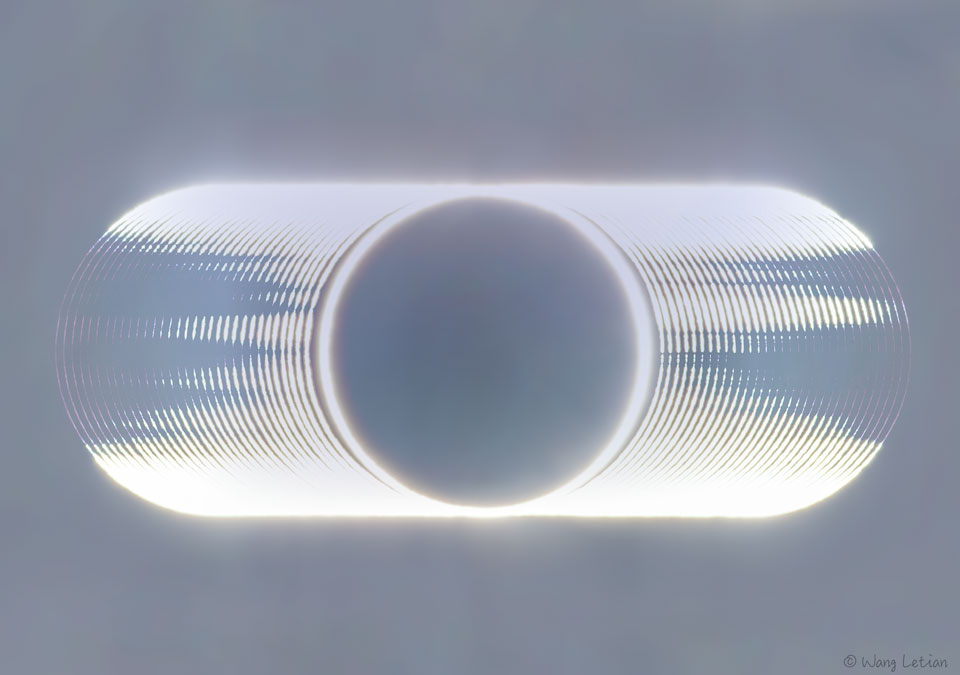2023年9月17日
Moon Mountains Magnified during Ring of Fire Eclipse
Credit & Copyright: Wang Letian (Eyes at Night)
Explanation: What are those dark streaks in this composite image of a solar eclipse? They are reversed shadows of mountains at the edge of the Moon. The center image, captured from Xiamen, China, has the Moon’s center directly in front of the Sun’s center. The Moon, though, was too far from the Earth to completely block the entire Sun. Light that streamed around the edges of the Moon is called a ring of fire. Images at each end of the sequence show sunlight that streamed through lunar valleys. As the Moon moved further in front of the Sun, left to right, only the higher peaks on the Moon’s perimeter could block sunlight. Therefore, the dark streaks are projected, distorted, reversed, and magnified shadows of mountains at the Moon’s edge. Bright areas are called Baily’s Beads. Only people in a narrow swath across Earth’s Eastern Hemisphere were able to view this full annular solar eclipse in 2020. Next month, though, a narrow swath crossing both North and South America will be exposed to the next annular solar eclipse. And next April, a total solar eclipse will be visible across North America.
Open Science: Browse 3,000+ codes in the Astrophysics Source Code Library
Tomorrow’s picture: sprite tree
日环食期间被放大的月球山峰
影像提供与版权: Wang Letian(王乐天) (Eyes at Night)
说明: 在这张摄于日食期间的组合影像里,这些暗纹是什么?它们是月缘山峰的倒转影子。最中间摄于中国厦门的照片,则呈现了月亮中心与太阳中心重合的食甚阶段。在此例日食里,月亮离地球太远,因此无法遮住整个日盘。阳光得以从月亮的边缘透过来,形成火之环的景观。此外在这个影像系列里,于环食启始的食既和结束的生光阶段,阳光也会从月谷漏出来。随着月亮从左到右移过日盘,只有较高的月缘山峰,才能挡住阳光。因此这些暗纹,其实是月缘山峰投射出的扭曲、倒转及放大影子。影像中的亮区称为倍里珠。在2020年时,只有在东半球的狭窄食带内,才能见到这例日环食的完整过程。在下个月,于穿过北美洲及南美洲的狭窄的食带里,可再次见到另一个日环食。然后在明年4月,北美洲可见到日全食。
开放科学: 浏览天体物理学源代码库中的3,000多个代码
明日的图片: sprite tree



